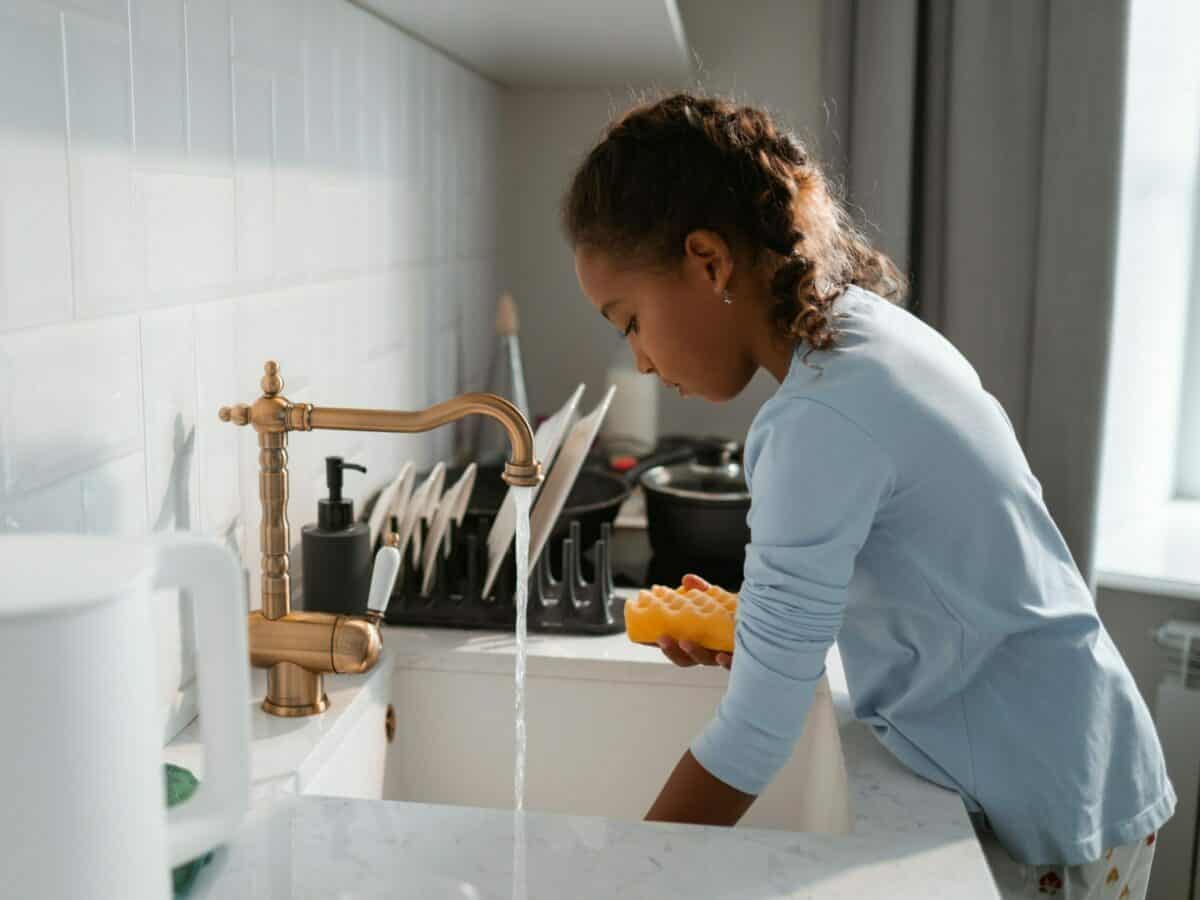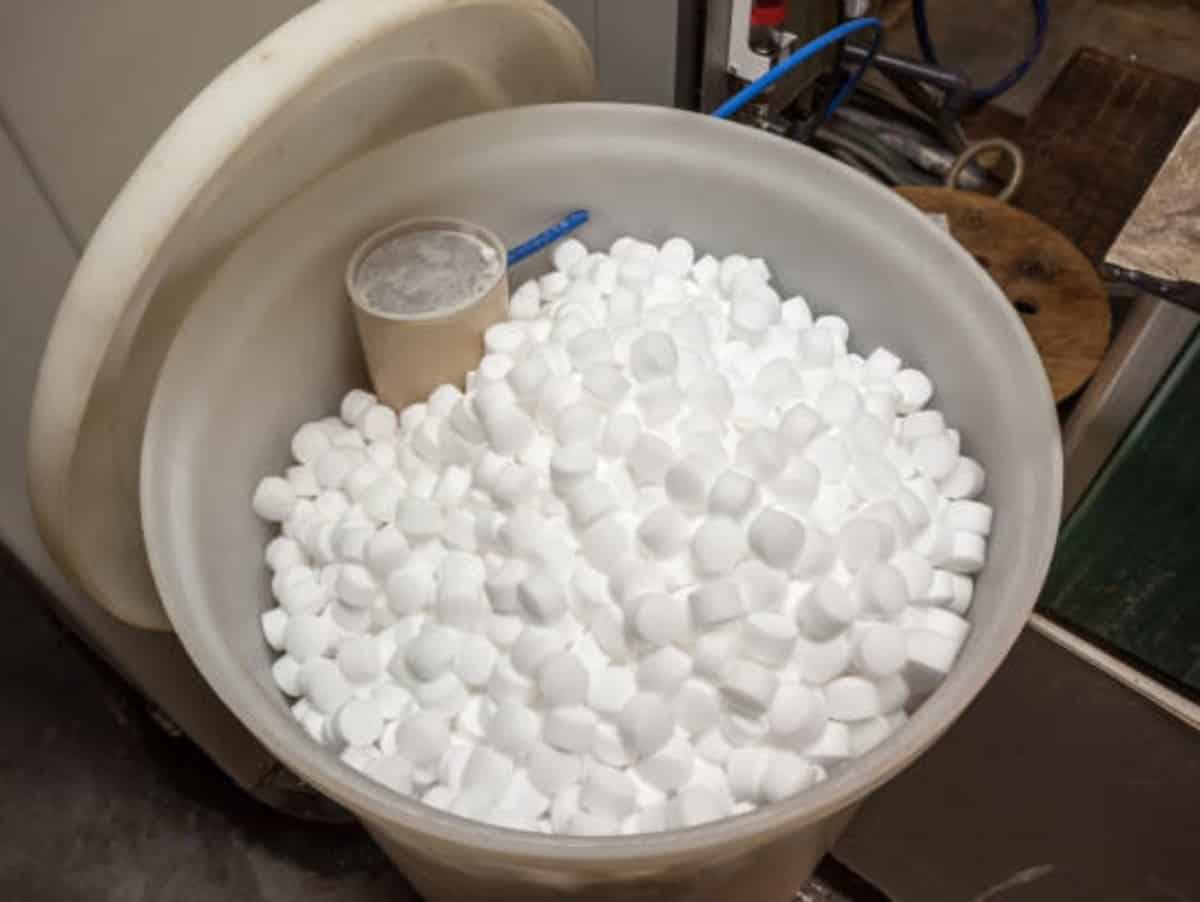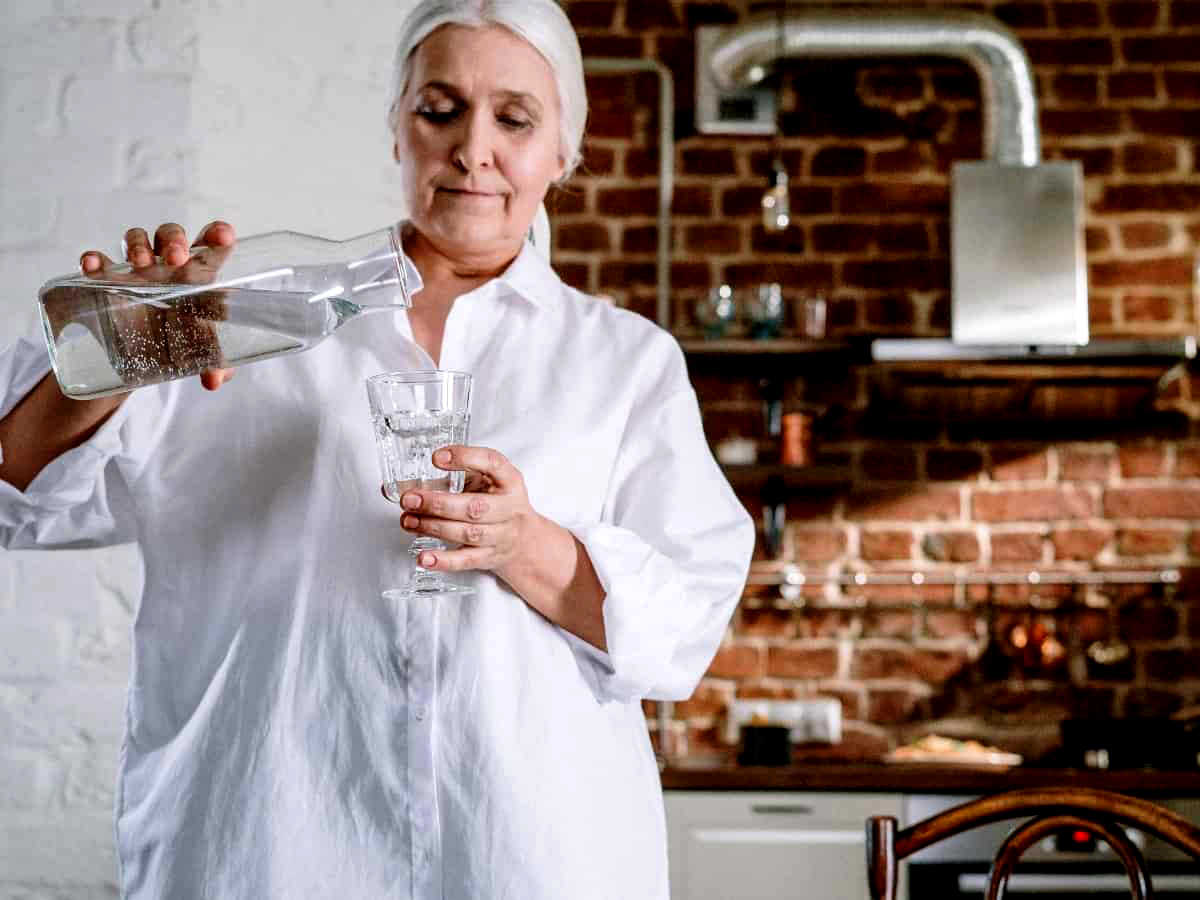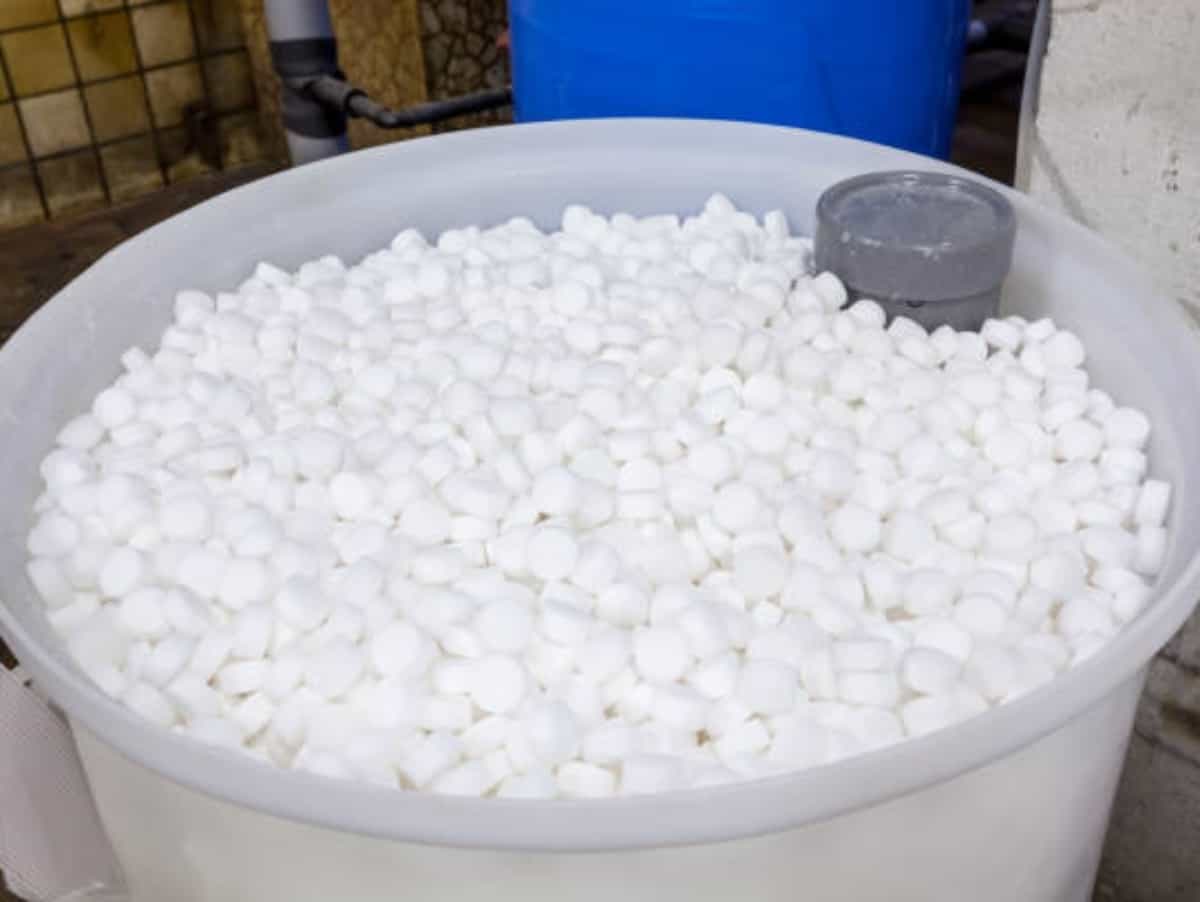Ever ask yourself the question “Why is salt so important for a water softener?” Just like you, there are others out there wondering the same thing. Multiple reasons exist for the importance of salt, which helps water softeners be more effective. Water softeners are a fantastic way to get clean, softer water in your home. They work by adding salt to the water supply and removing any hard minerals from it. If you’re looking for information on how to add salt to your water softener, then this post will tell you everything you need!
How Often Do You Add Salt to the Water Softener?
If you’re not used to water softener systems, then you’ll want to know why, how often, and the importance of adding salt. Understanding why salt is crucial is the first step as it’s necessary for understanding how a water softener works and its process.
Why is Salt Important?
Vital to those systems that have ion exchange, salt is a much-needed component. Ion exchange helps the salt break down the hard minerals in water and break them down into what’s called sodium ions. The ion-exchange method is a natural way to bring quality softened water into your home that is safe to drink.
Salt Bridges
Salt is vital to ensuring your tank can perform as it should. That’s why it’s important to know how to add salt to your water softener. When you’re first starting with a water softener and aren’t familiar with it yet, you’ll want to check your softener brine tank at least every week by lifting the top and peeking in to see what your salt levels are at. If there’s salt at a consistent level and never seems to go down, you have what’s called a salt bridge.
A salt bridge is when salt is above the waterline and hardening. Over time, salt has hardened and built up because of the conditions of the tank. Sometimes brine tanks are placed in humid areas in the house, which can cause this. It’s best to check every two to three months and make sure one isn’t forming. A way to avoid this is to not have the brine tank overfilled with salt. You’ll want to keep it filled but not more than 4-6 inches below the top of the brine tank.

How Much Salt Should I Add to my Water Softener?
This depends on whether you have a system more than ten years old, or a newer system. The newer systems don’t use as much salt and are much more effective in their salt usage. Salt will be the component that keeps your water soft, so it’s important to add this when it looks low.
For newer systems, you should check the tank every 6-8 weeks to see if it needs more salt. That doesn’t mean you shouldn’t check in between, though, in case there’s a need to top it off. Older systems will need topping off more frequently.
How to Add Salt to Water Softener
- Check and see if your softener has an indicator light. This is usually on newer systems and it is there to help you know when the salt levels need to be checked.
- If you have an older tank without an indicator, you must manually check the brine tank.
- Lift the lid of the brine tank and look inside for salt levels.
- Use quality salt of at least 99.5% when refilling. This will help with quality and how much salt is used over time.
- Pour and fill the tank! Easy!
- When filling, be careful not to overfill. Salt should be 4-6 inches away from the top of the tank. Don’t overfill!
- Depending on the size of the tank, it needs more salt than you think. Again, shoot for that 4–6-inch mark below the tank rim.
- Enjoy your softened water!
The Brine Tank and Why it’s Important
The brine tank is exactly what the name implies. A plastic housing that holds everything you need to be able to use it effectively. Here the brine tank is the star of the show and especially important to your water-softening efforts. You should check this often to make sure you don’t need to top it off, or that salt bridges are forming.
Learning how to add salt to your water softener brine tank is a simple task once you get used to it. Maintaining a brine tank can be easy if you keep up with it. The importance of keeping it maintained is vital to its performance. This is especially important at the beginning when you’re learning how to add salt to your water softener to maintain your tank.
One thing to note here is that there are also alternatives to use instead of salt. Another example of what you can add is potassium. If you’re on a low-salt diet, you’ll want to switch over to this as regular salt used in a brine tank will transfer some sodium over to the water when it’s recharging. Potassium is healthy, natural, and safe to use.

What Happens if I Add Too Little or Too Much Salt?
In checking your brine tank consistently, you find that it always looks full of salt. Check for a few things first. Salt bridges can form over time and if you have a salt bridge, you’ll need to fix that first as the salt bridging over the brine tank can deceive you about whether or not you need more.
Also, keep in mind that when you first start using and learn how to add salt to a water softener, check it one to two times a week to get an idea of how much salt it uses.
Can You Add Too Much Salt?
Yes! Overfilling it will not allow it to do its job and will cause the salt bridge mentioned. Salt sits at the top of the tank and forms these bridges. This becomes a problem for homeowners if not taken care of. You won’t be able to tell how fast the salt is going down, especially in the beginning when you’re learning how to add salt to the water softener, as this is where you’ll need a critical eye.
Salt clings to any surface. Ensuring you don’t get salt bridges in the first place would be preferable, but if you get them, you can read this article on how to get rid of salt bridges.
Can I Add Too Little Salt?
Absolutely! Having too little salt in your brine tank will cause issues like,
- Orange mineral staining.
- White spots on surfaces.
- Soap and shampoo will not lather.
These are a few things, but you see the importance of keeping your brine tank maintained and filled.
Remember, now that you’ve learned how to add salt to your water softener, you only need to make sure it’s filled correctly to get it in working condition and working properly. Not keeping your brine tank adequately maintained can cause damage to the water-softening system itself.
What Happens If You Run Your Water Softener Without Salt?
Not having enough salt in the brine tank will cause the issues mentioned above, as well as not allowing it to regenerate properly. A tank will usually regenerate once a week depending on your water usage, the size of the tank, and other factors. Not having the ability to regenerate means your system won’t have the ability to remove the hard minerals you’re trying to get out.
No salt in the brine tank doesn’t just mean you won’t have soft water anymore. The harder water will cause damage to anything your water encounters, and it may damage your water softener system.
Not only will it damage your belongings, but long-term use of a water softener without salt can lead to even greater problems. The minerals in the water, without the softener, will gather in places not easily cleaned. The showerheads, sink faucets, and more will clog from the buildup of minerals. You can also experience poor water pressure and issues with appliances. This is due to a mineral build-up.

Simplify Your Process!
When you’re using a water softener properly, your water will taste great, not damage anything, and be healthier for you as well. Once you get used to checking and filling the brine tank, it will be easy going from there on out. Just make sure you’re properly checking for problems, fill it in correctly, and don’t let it run without salt.
When it comes to water filtration, trust ONIT Home to amplify your at-home water source. From water softening systems to UV water purification, we’re ONIT to make sure that your tap water is clean, delicious, and healthy for your whole family. To get started, visit us online or give us a call today at 1-833-433-0331 to get started.



